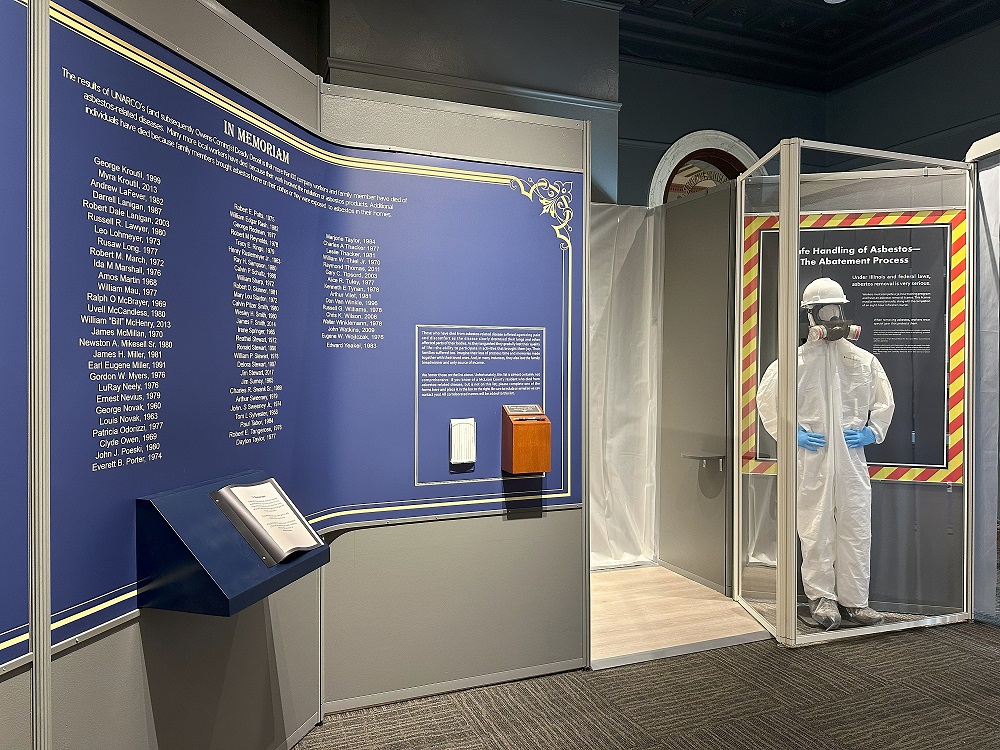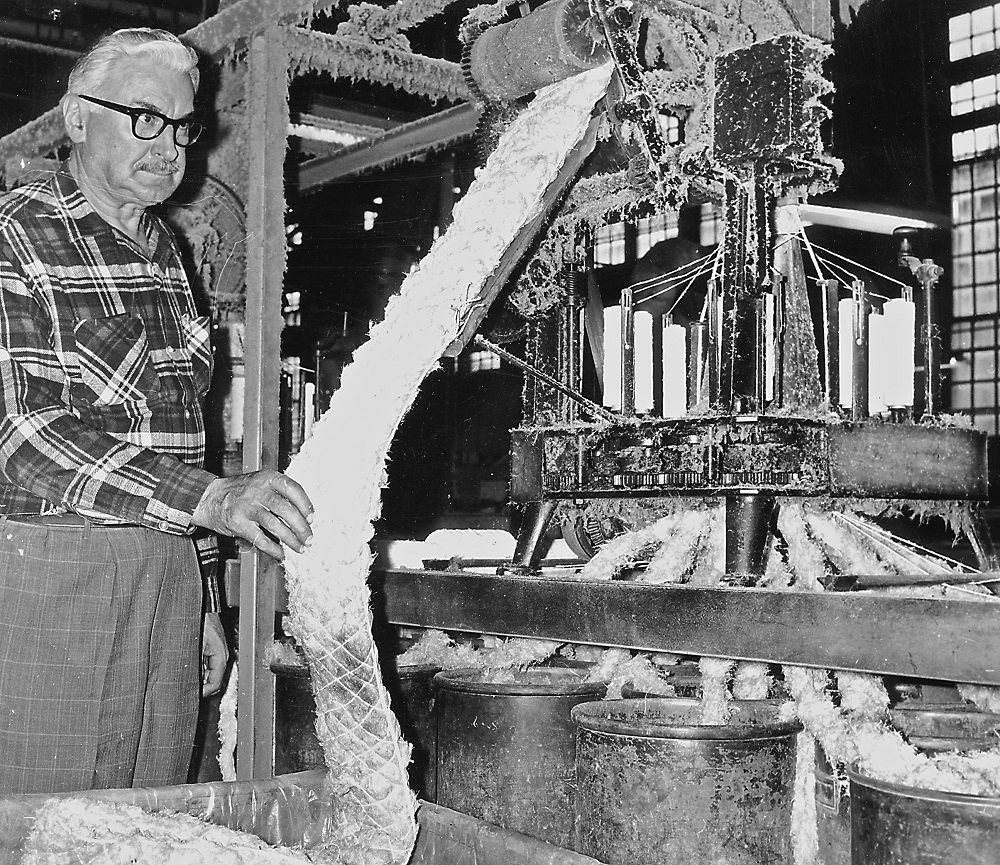Museum Highlights the History of Asbestos in America
Asbestos Exposure & BansWritten by Travis Rodgers | Edited By Amy Edel

The McLean County Museum of History in Bloomington, Illinois recently unveiled a new exhibit focusing on asbestos, corporate deception and the fight for workers’ rights. The exhibit opens on Saturday, September 7, 2024 and runs through 2027.
The display entitled “A Deadly Deception: The Asbestos Tragedy in McLean County” delves into the history of asbestos and digs deeper into the Union Asbestos and Rubber Company. Unarco produced asbestos insulation products at the plant in Bloomington between 1951 and 1972. Unarco moved its facilities from Cicero to Bloomington in 1951 after settling several workers’ compensation cases in the Chicago area.
Unarco filed for bankruptcy in 1982 following multiple asbestos lawsuits. Unarco also established an asbestos trust fund for former workers with asbestos-related diseases such as mesothelioma. The now closed trust fund settled 188,406 claims and paid out $262,248,992.
Tip of the Asbestos Iceberg
The exhibit’s creators want everyone to know what happened in Bloomington, Illinois is just one example of how asbestos affected workers and their families. The exhibit was in development for a decade.
Historian and exhibit co-curator Mike Matejka spoke with the Mesothelioma Center at Asbestos.com, telling us: “Unarco isn’t an outlier; this is a case study of people being used as guinea pigs with long-term implications. This exhibit is an example of a larger problem, not just in Bloomington.”
This exhibit illustrates a national tragedy on a local scale while educating the public about the dangers of asbestos and honoring our neighbors who lost their lives.
“This exhibit tells a story larger than just McLean County,” said Museum Executive Director Julie Emig. “It’s a universal story of people being sacrificed and forced to endure toxic conditions and environmental hazards, all in the pursuit of profit.”
It’s possible many more people actually died from asbestos exposure linked to the Unarco plant. Since the dangers of asbestos weren’t fully known in the past, many people who lost their lives from an asbestos-related disease likely didn’t have that listed as their cause of death on a death certificate.
Organizers of the exhibit believe more people may come forward with stories of loved ones who may have died from their exposure at the Unarco plant. “We’re hoping to hear from more family members of people who died from an asbestos-related illness from this exhibit,” added Matejka.
Display Honoring Lives Lost
When guests arrive at the McLean County Museum of History, they’ll see a visual history of the Unarco plant. Also included in the exhibit are quotes and personal stories of people asbestos at the facility has affected, a large display of consumer products that contained asbestos and X-rays making the damage asbestos can do to lungs clear.

You can also see a memorial wall at the exhibit listing the names of 133 people in McLean County whose deaths are linked to asbestos exposure. The memorial includes the name William McHenry, as well as his wife and three children’s names, who all died from secondary asbestos exposure as a result of McHenry’s job at the Unarco plant. Secondary exposure occurs when a person who works with asbestos products brings the toxic fibers home on their hair, skin or clothing.
“As new products, chemicals and materials come into production, workers are often the guinea pigs who first suffer the ill effects,” explained Matejka. “Despite continual reassurances that the product is safe, workers, their families and neighbors bear the medical and social costs.”
Asbestos Risks for Factory Workers
Factory workers and machine operators are at a high risk of developing an asbestos-related disease. That’s because asbestos products can become friable, propelling toxic fibers into the air that can be inhaled or ingested. The danger is exceptionally high for workers at a company like Unarco since they handled insulation products made from asbestos.

Asbestos safety in the workplace remains important for occupations such as automotive repair, chlor-alkali production, construction, demolition and jobs in the nuclear industry. The Occupational Safety and Health Administration and the United States Environmental Protection Agency created stringent guidelines to protect workers from dangerous asbestos. Both agencies can impose fines against employers for violating workplace standards, ensure workplaces are regularly inspected and make sure that workers are properly trained.
Asbestos exposure is the No. 1 cause of work-related deaths globally. Once inhaled, asbestos fibers can become trapped in the body. Symptoms of an asbestos-related illness can take decades to develop after the initial exposure.






